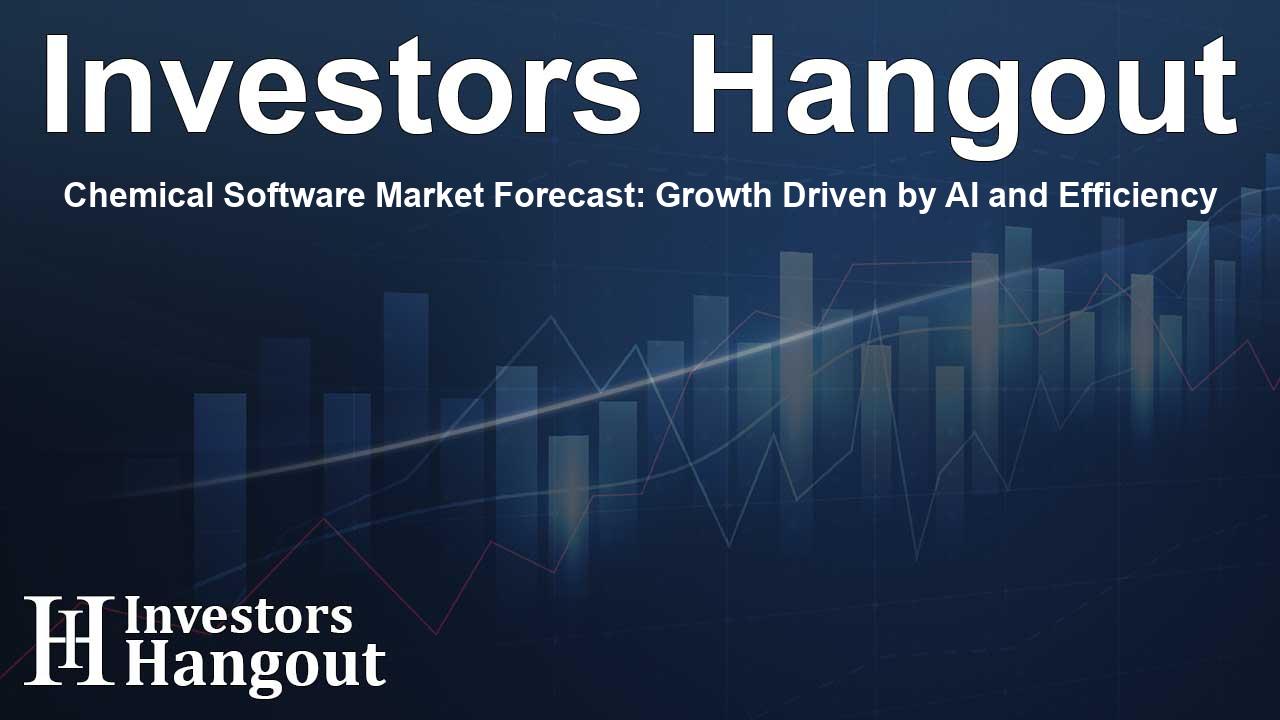Chemical Software Market Forecast: Growth Driven by AI and Efficiency

Understanding the Potential of the Chemical Software Market
The global chemical software market is on an impressive growth trajectory, estimated to reach USD 561 million from 2025 to 2029. This lies within a broader context of digital transformation where industries, especially chemicals, are striving for operational excellence by embracing advanced technologies.
Market Dynamics Fueled by AI Integration
The integration of artificial intelligence (AI) plays a pivotal role in the evolution of this market. Chemical companies are increasingly adapting to Industry 4.0 concepts, utilizing AI-powered software solutions to enhance efficiency, predictive maintenance, and operational safety. Notable players in the industry, such as BASF, are leveraging these technologies for process management and optimizing runtime through indicative software solutions.
Benefits of AI in Chemical Operations
AI's contribution to the chemical industry is remarkable. With the ability to analyze vast amounts of data, AI tools facilitate better decision-making and streamlined operations. Companies can manage complex production processes efficiently while ensuring compliance with increasing regulatory demands. Features like real-time data analysis and automation are not just optional anymore; they have become essential for maintaining quality and safety in chemical production.
Challenges Facing the Chemical Software Market
Despite the promising growth, the chemical software market must navigate a multitude of challenges. Regulatory compliance is paramount, with organizations like the US EPA implementing stringent rules regarding emissions and hazardous materials. Such regulations can hinder growth and increase the demand for sophisticated software that not only meets compliance but also enhances productivity.
Regulatory Landscape and Its Impacts
The impact of regulatory compliance is profound. Companies that fail to adhere to guidelines set by various authorities face severe consequences, including penalties and operational halts. Therefore, software solutions designed for the chemical industry must evolve continually to align with changing laws while also providing effective operational frameworks.
Key Market Segments Shaping Future Trends
A closer look at the sectors driving market demand reveals an inclination towards cloud-based solutions. Organizations are progressively transitioning from traditional on-premise systems to more flexible, cloud-based platforms that allow for easier data management and accessibility. This shift is partly due to the enhanced scalability and cost-effectiveness of cloud technologies.
Recent Developments in Chemical Software Solutions
Market players are investing in innovative technologies, such as molecular modeling and dynamics software, which cater to the specific needs of the chemical sector. With the emphasis on smart manufacturing and automated processes, businesses are prioritizing software solutions that offer versatility and adaptability to different operational contexts.
The Future Outlook of the Chemical Software Market
Looking ahead, the global chemical software market is poised for substantial growth, driven by technological advancements and the pressing need for enhanced efficiency. As companies increasingly invest in AI-driven solutions, the potential for growth is tremendous, with projections indicating a continued upward trajectory over the coming years.
Strategic Moves by Leading Companies
Leading companies are staying ahead of the curve by adopting innovative strategies. By modernizing their operations and leveraging data analytics, these organizations aim to improve their competitive edge in a fragmented market. Continuously investing in research and development will be critical to responding to evolving market demands.
Frequently Asked Questions
What is the expected growth rate of the chemical software market?
The chemical software market is projected to grow at a CAGR of 11.4% between 2025 and 2029.
What role does AI play in the chemical software market?
AI enhances operational efficiency, predictive maintenance, and decision-making capabilities for chemical companies.
What are the primary challenges faced by the chemical software market?
Key challenges include regulatory compliance and the need for effective integration of various software systems.
Which companies are leading the chemical software market?
Prominent companies in the market include BASF, ANSYS, and Aspen Technology, among others.
How is cloud technology impacting the chemical software sector?
Cloud technology offers scalability, flexibility, and cost-effective solutions, driving companies towards cloud-based software platforms.
About Investors Hangout
Investors Hangout is a leading online stock forum for financial discussion and learning, offering a wide range of free tools and resources. It draws in traders of all levels, who exchange market knowledge, investigate trading tactics, and keep an eye on industry developments in real time. Featuring financial articles, stock message boards, quotes, charts, company profiles, and live news updates. Through cooperative learning and a wealth of informational resources, it helps users from novices creating their first portfolios to experts honing their techniques. Join Investors Hangout today: https://investorshangout.com/
Disclaimer: The content of this article is solely for general informational purposes only; it does not represent legal, financial, or investment advice. Investors Hangout does not offer financial advice; the author is not a licensed financial advisor. Consult a qualified advisor before making any financial or investment decisions based on this article. The author's interpretation of publicly available data shapes the opinions presented here; as a result, they should not be taken as advice to purchase, sell, or hold any securities mentioned or any other investments. The author does not guarantee the accuracy, completeness, or timeliness of any material, providing it "as is." Information and market conditions may change; past performance is not indicative of future outcomes. If any of the material offered here is inaccurate, please contact us for corrections.